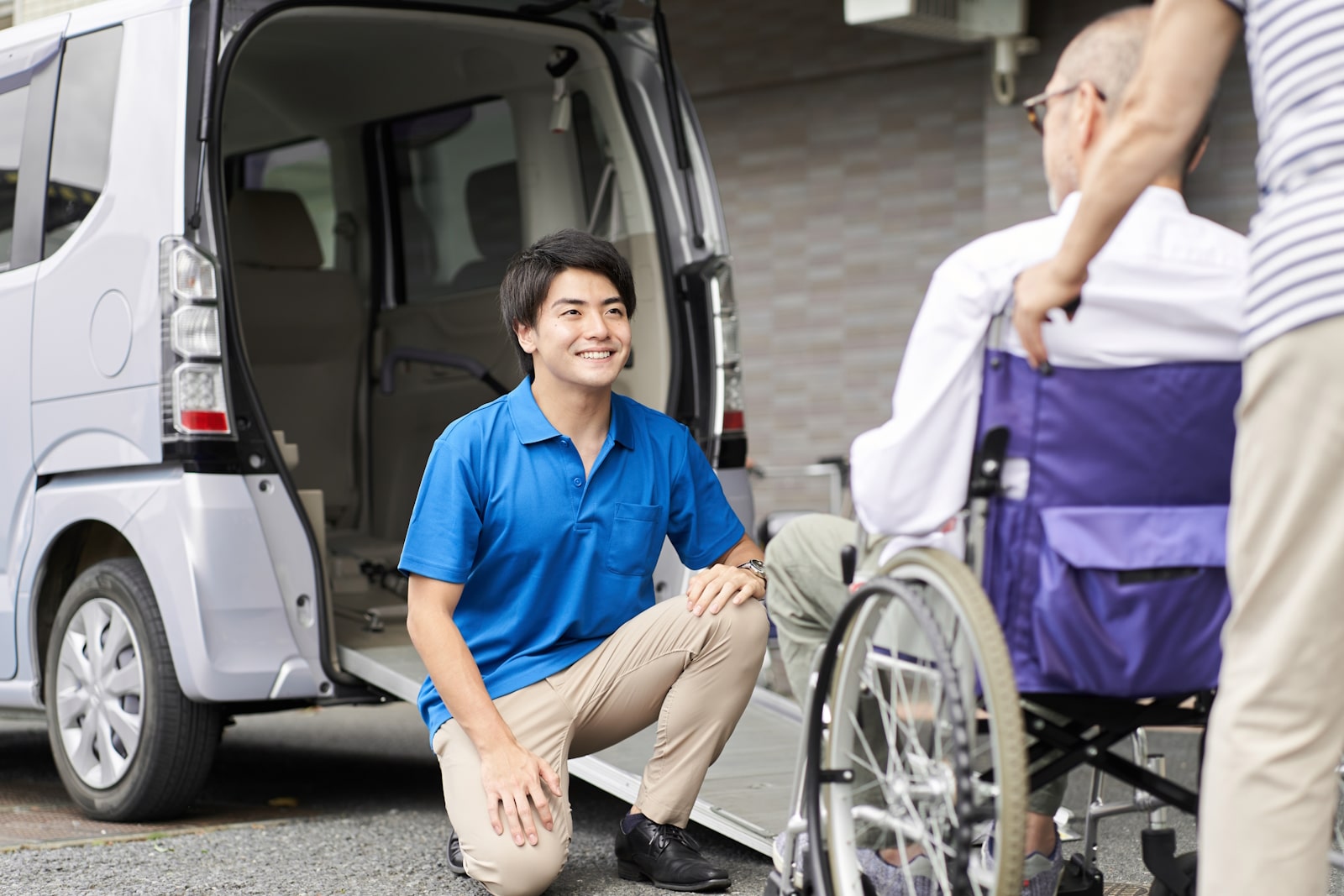
Passenger Lifts vs Ramps: Which Is the Better Option?
Ensuring safe, efficient, and reliable transport for people with mobility challenges is a growing priority across South Africa. Passenger lifts play a critical role in enabling wheelchair users, mobility scooter users, and others with limited mobility to board and exit vehicles safely, efficiently, and independently. Choosing between passenger lifts and ramps can have a major impact on safety, operational efficiency, and overall accessibility.
Ramps remain a simpler, lower-cost option, but they come with limitations such as space requirements, physical effort, and potential safety risks. Understanding the advantages and trade-offs of each solution is essential for transport operators, community services, and vehicle owners who want to ensure inclusive mobility for all users.
Understanding Passenger Lifts and Ramps
Passenger lifts are mechanical platforms installed on vehicles that raise or lower passengers, often in wheelchairs, into and out of vehicles. They typically operate via hydraulic or electric systems and include safety features such as non-slip surfaces, automatic brakes, and edge sensors. These lifts are particularly useful in scenarios with limited space or heavy mobility devices.
Ramps are inclined planes that allow wheelchair users to roll onto a vehicle. They may be fixed, folding, or portable and are mechanically simpler. While ramps can be cost-effective and flexible, they require more physical effort to deploy and may not be suitable for all vehicle or passenger needs.
Ease of Use
The ease of use of accessibility solutions directly impacts both passenger independence and operator efficiency. Passenger lifts are highly user-friendly, requiring only the press of a button to operate. This allows wheelchair users to board and exit vehicles without assistance, reducing the strain on drivers and companions.
Ramps, particularly manual or folding types, can be physically demanding. Deploying, securing, and retracting a ramp often requires additional effort, which may be challenging for users with limited upper-body strength.
- Passenger lifts require minimal physical effort to operate.
- Boarding and exiting are quick and automated.
- Minimal assistance is required from companions or operators.
- Ideal for users with limited upper-body strength or mobility.
Despite their higher upfront cost, passenger lifts significantly reduce boarding fatigue and improve overall efficiency. Users often report feeling more secure and confident on lift platforms compared to inclined ramps. The reduced effort required also contributes to faster boarding times and less stress for transport operators.
Space Requirements
Space constraints are a major factor in vehicle accessibility, particularly in urban South African environments. Passenger lifts fold compactly when stowed and occupy minimal vehicle footprint. This makes them ideal for minibuses, vans, and other vehicles where interior space is limited.
Ramps require a long, gradual slope to comply with safety standards, which can take up significant floor space and may be impractical in tight parking or urban conditions.
- Passenger lifts are compact when stored inside or outside vehicles.
- They can fit in small vehicles without affecting passenger space.
- Ramps require long deployment areas for safe slopes.
- Spatial limitations can restrict ramp use in congested areas.
In urban and high-density environments, passenger lifts offer a more practical solution. Their compact footprint allows operators to maintain passenger seating arrangements without compromising safety or accessibility.
Loading Time
Efficient boarding is crucial in high-frequency transport services. Passenger lifts generally deploy and operate within 30 to 60 seconds, allowing multiple passengers to board quickly and safely.
Ramps, especially portable or folding types, take longer to set up and retract, which can slow operations and extend boarding cycles.
- Passenger lifts operate automatically with a single button press.
- Boarding cycles are typically under a minute.
- Ramps may require several minutes to deploy and secure.
- Manual effort can further increase loading time.
Shorter loading times offered by passenger lifts can improve overall route efficiency and reduce delays. This makes lifts particularly valuable for community transport, paratransit services, and other high-use applications.
Weight Capacity
Many users require transportation solutions that can handle powered mobility devices or heavier wheelchairs. Passenger lifts are designed with high load capacities, accommodating up to 500 kg on certain Dhollandia models.
Ramps are limited by angle, material strength, and slope, which may restrict their ability to safely carry heavier devices.
- Passenger lifts support powered wheelchairs, scooters, and stretchers.
- High load capacity ensures safe operation for all users.
- Ramps have lower weight limits due to structural constraints.
- Heavy cargo or equipment may not be suitable for ramp use.
High load capacity lifts provide consistent performance and safety across a variety of scenarios. They also reduce the risk of accidents associated with overloading ramps or exceeding weight limits.
Vehicle Stability and Safety
Safety is a key priority for passengers and operators. Passenger lifts maintain a level platform during boarding and include automatic brakes, edge sensors, and barriers to prevent rollbacks.
Ramps can pose safety risks, particularly in wet, icy, or uneven conditions. Users may struggle to control momentum, and improper deployment can lead to tipping hazards.
- Lifts keep the vehicle level during boarding.
- Automatic brakes and safety sensors reduce accident risks.
- Ramps can slip or tip if not properly secured.
- Steep ramps increase the risk of wheelchair rollback.
Passenger lifts offer predictable and reliable safety features, making them ideal for environments where passenger security is a priority. Their engineered design reduces the likelihood of accidents compared to ramps.
Maintenance and Durability
Passenger lifts require routine maintenance for hydraulic and electrical systems, but they are generally robust and long-lasting. Dhollandia lifts are made with durable materials such as stainless steel pistons and reinforced platforms.
Ramps have fewer moving parts but are vulnerable to wear, corrosion, and damage over time, particularly in high-use or outdoor settings.
- Lifts require periodic inspections and servicing.
- Durable materials extend lift lifespan.
- Ramps may deteriorate faster in adverse conditions.
- Mechanical simplicity of ramps reduces technical maintenance needs.
For operators with high-frequency use, passenger lifts are often the more reliable long-term solution. They offer predictable maintenance schedules and consistent performance even under heavy use.
Cost Considerations
Initial investment is a factor when choosing accessibility solutions. Passenger lifts are more expensive upfront due to mechanical complexity, installation, and safety certification.
Ramps are generally cheaper to purchase and install, especially simple folding or portable types. Operational costs, however, must also consider boarding efficiency, manpower, and long-term usability.
- Passenger lifts have higher initial purchase and installation costs.
- Lifts reduce operational time and physical effort.
- Ramps have lower upfront costs but may increase manual labour.
- Operational inefficiencies with ramps can lead to hidden expenses.
In many cases, the benefits of passenger lifts, safety, speed, and reliability, offset their initial cost, particularly for frequent-use services or regulated transport operations.
Accessibility in Different Conditions
South African weather conditions vary, and accessibility solutions must perform reliably in rain, heat, and dust. Passenger lifts are designed with non-slip surfaces and protective seals for all-weather operation.
Ramps can become slippery or hazardous when wet, and deployment may be difficult in adverse conditions.
- Lifts operate safely in rain, dust, and high temperatures.
- Non-slip surfaces reduce accident risk.
- Ramps can become slippery and unsafe in wet weather.
- Adverse conditions may require additional maintenance or preparation for ramps.
Passenger lifts provide consistent accessibility regardless of environmental conditions. Their design ensures safe and reliable boarding across the diverse climates of South Africa.
Versatility for Cargo and Multi-Purpose Use
Passenger lifts can carry both passengers and heavy cargo, making them versatile for community transport and emergency services.
Ramps are primarily designed for passenger use and may not safely accommodate bulky or heavy items.
- Lifts support both passengers and cargo safely.
- High load capacity allows multi-purpose use.
- Ramps are typically limited to passenger wheelchairs.
- Cargo handling on ramps may be unsafe or impractical.
The versatility of passenger lifts makes them a practical choice for operators who require flexible transport solutions that accommodate both mobility devices and equipment.
Regulatory and Compliance Aspects
Compliance with accessibility regulations is crucial for public transport and commercial operations. Passenger lifts meet strict safety standards such as UNECE R107, which specifies platform size, load capacity, and safety features.
Ramps must comply with slope, width, and landing requirements, but they are more constrained in meeting formal regulatory requirements for commercial operations.
- Lifts meet rigorous technical and safety standards.
- Regulatory compliance ensures legal operation in public transport.
- Ramps are restricted by slope and landing rules.
- Commercial compliance may be more challenging with ramps.
Passenger lifts provide a more straightforward path to full accessibility compliance. They are engineered to satisfy regulations while ensuring safety and comfort for passengers.
Decision Framework
Operators and vehicle owners must consider multiple factors when choosing between passenger lifts and ramps. Frequent, high-volume transport, limited space, heavy devices, and adverse weather favour passenger lifts.
Low-use scenarios, cost constraints, or simple applications may make ramps more suitable. Operators should evaluate operational frequency, passenger needs, spatial constraints, and regulatory compliance when making decisions.
- Passenger lifts are ideal for high-frequency transport and heavy devices.
- Lifts provide reliable, safe, and fast boarding.
- Ramps are suitable for low-frequency or cost-sensitive use.
- Spatial and regulatory constraints influence accessibility solutions.
Passenger lifts often provide superior efficiency, safety, and versatility, making them the recommended option for operators seeking comprehensive accessibility solutions.
Making the Right Choice for Accessibility
Passenger lifts offer significant advantages over ramps in South Africa, providing ease of use, safety, high load capacity, and regulatory compliance. Their efficient boarding, weather resilience, and versatility make them the preferred choice for frequent-use transport and community services.
Ramps remain useful for low-frequency or budget-conscious scenarios, but they have limitations in space, safety, and efficiency. At Dhollandia South Africa, we specialise in high-quality passenger lifts designed for local conditions. Contact us to discuss your vehicle requirements, request a quote, or schedule a consultation. Let us help you enhance accessibility and provide safe, reliable, and dignified transport for all passengers.
